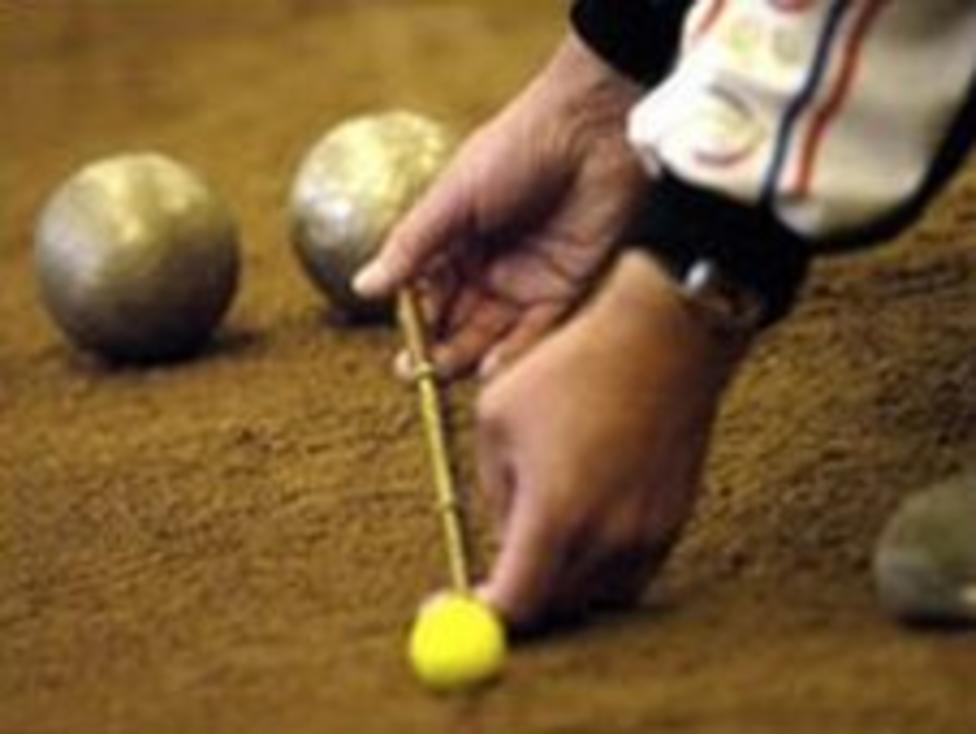
Playing Petanque
PLAYING PETANQUE.
How do I throw a boule? While there is no restriction on how you may throw a boule, other than keeping your feet inside the 50cm diameter throwing circle and remaining on the ground until the thrown boule has landed, it is generally accepted that the boule be thrown with a back-handed underarm action. This ensures a competent release that results in a straight roll on landing. There are two keys to developing a competent technique. The first is to have boules that fit your hand so that they can be cradled in your curved fingers without gaps and your thumb is in a neutral position so that it is not touching the boule. This means that your fingers and or thumb are not gripping the boule in any way. Doing so will impart side spin on landing should your release be less than square with a turn or flick of the wrist. If your boule lands and goes sideways do not blame the landing spot because 90% of the time it will be player error in the way the boule was released on the throw. The second is to maintain a bent wrist, at approximately 90 degrees to your forearm, throughout the backswing and forward swing to release the throw. Doing so will ensure that your hand naturally unfolds to the release point and results in an imparted backspin that maintains the straight direction of the roll and the following length to finishing point.
How do you score points? Unlike bowls you do not take turns to throw. Once the first players of each side have thrown their boules, the side that is not closer to the jack (that is they do not “hold the point”) continues to throw their boules until their boule is closer to the jack. If the first throw goes out of bounds, and so does the next opposition throw, then the second player throws again because they have failed to take the point. If that throw is not valid, then throws are alternated until one player holds the point.
How many points are required to win a game? Generally games are played to the first to absolutely gain 13 points, although this can occasionally be reduced to 11 points at the competition organisers’ discretion. Nowadays competitions are routinely played to a time limit. This can be 45 minutes but mostly it is 50 minutes, at the discretion of the organisers, and then one extra end is played if the game is tied at this point, then another end will be played. It is important to note that the end is completed when the last thrown boule has touched the ground under local PFA rules. Therefore, if the last boule has landed and the whistle/bell/siren is then sounded, there will be TWO ends of normal play remaining.
How many boules do I need in order to play? The maximum number of boules required is three, if you are playing singles or doubles but if you are playing triples each player only has two boules. While social boules are allowed in some tournaments/competitions, a legal boule is required to have the makers brand and identifying marks legible and be weighted between 660g and 800g. A handy hint: It is always a good idea to know how many boules your opposition have played and how many boules your side has “in hand”. In doubles and triples the total will always be 12. However it is permitted to ask how many boules your opposition has in hand.
Are there positions in a team? There is no prescribed order of play in doubles or triples. Any person in a team may throw the jack and any person may throw the next and following boules. However there is a generally accepted idea that there are accepted roles. A “Pointer” throws their boule with a lobbing action to land and roll to the target point. Generally a pointer will throw consecutively so they can adjust their next throw for length, strength or line based on their previous throw but it is not universal. A “Shooter” will throw with the intention of making a direct hit on a boule that is holding or is better than a team mate’s boule, so as to remove that boule to regain the point or provide the opportunity to gain more points. When a boule is thrown to dislodge another and then remains in its place this is called a “carreaux” and is an ideal throw. In triples the middle player is called the “milleur” as they may be called upon to shoot or point. Players should stick to their expected role. Pointers do not shoot unless called upon to do so.
Watch Some Champions playing:-
